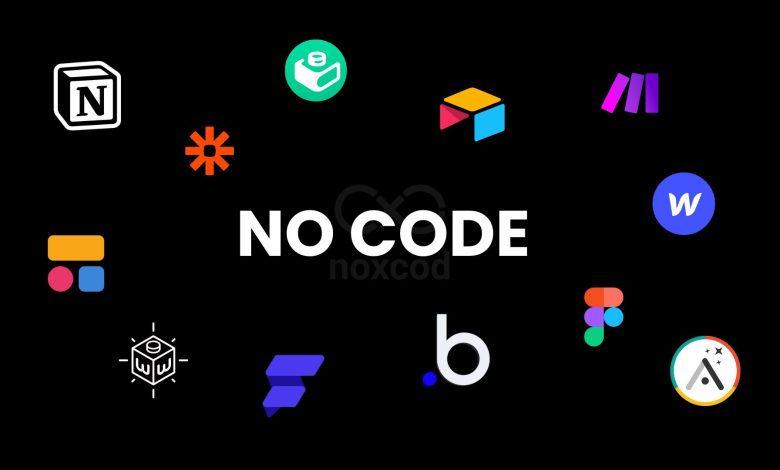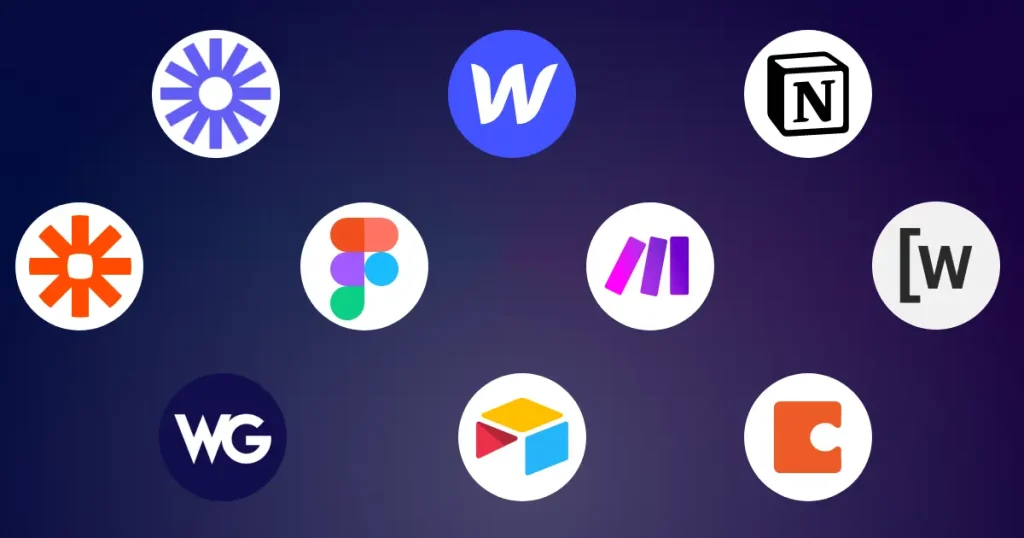The Rise of No-Code Tools: Everyone’s a Developer Now?

The rise of no-code tools: everyone’s a developer now? This question captures a major shift in technology. No-code platforms let anyone build websites, apps, and digital tools without writing a single line of code. This guide explains why no-code tools are booming, what they can (and can’t) do, and how they are changing business and creativity for everyone. You’ll find simple explanations, real case studies, key features, tips, a comparison table, and answers to common questions.
Introduction: The Rise of No-Code Tools
The rise of no-code tools: everyone’s a developer now? No-code platforms are changing who can build technology. You no longer need to be a programmer to create a website, launch an app, or automate a business process. This democratization is opening doors for entrepreneurs, students, small businesses, and creative thinkers everywhere.
What Are No-Code Tools?
No-code tools are software platforms that let people build digital products using visual interfaces—like drag-and-drop editors—instead of writing code. Examples include:
- Website builders (Wix, Squarespace)
- App creators (Glide, Adalo)
- Automation tools (Zapier, Make)
- E-commerce platforms (Shopify)
- Database apps (Airtable)
How do they work?
- Users choose templates or start from scratch.
- They add features by dragging blocks or filling in forms.
- The platform handles all the technical details in the background.

Key Features of No-Code Tools
- Visual editors: Build apps, sites, or workflows by dragging and dropping.
- Templates: Start quickly with pre-made designs and functions.
- Integrations: Connect with popular services like Google Sheets, Slack, or PayPal.
- Automation: Set up workflows that run automatically (e.g., send an email when a form is filled).
- Scalability: Some tools can handle thousands of users and complex data.
- Collaboration: Teams can work together in real time.
- Low learning curve: Most people can start building within hours.
Why Are No-Code Tools Popular?
- Accessibility: Anyone can create digital products, not just programmers.
- Speed: Projects that used to take months can now be built in days or weeks.
- Cost savings: No need to hire expensive developers for many projects.
- Empowerment: Small businesses, nonprofits, and individuals can solve their own problems.
- Innovation: More people can test ideas, leading to faster innovation.
The Evolution and Impact of No-Code Tools
The Rise of No-Code Tools: A Historical Perspective
No-code tools didn’t appear overnight. They evolved from early website builders and spreadsheet automations to today’s powerful platforms that can create complex apps, automate workflows, and manage data at scale.

Timeline Table: No-Code Tools Through the Years
| Year | Key Milestone | Example Tool/Platform | Impact |
|---|---|---|---|
| 2000 | Drag-and-drop website builders | GeoCities, Wix | Anyone could make a basic website |
| 2010 | Workflow automation | Zapier, IFTTT | Simple automation without coding |
| 2015 | App builders | Glide, Adalo | Build mobile apps visually |
| 2020 | Full business platforms | Airtable, Bubble | Run entire businesses with no code |
| 2025 | AI-powered no-code | Softr, GPT integrations | AI helps automate and personalize apps |

The Democratization of Development
No-code tools have shifted the power to build from a small group of developers to anyone with an idea. This democratization means:
- Faster innovation: More people can test ideas quickly.
- Diverse creators: Entrepreneurs, teachers, and artists can build solutions for their unique needs.
- Reduced barriers: No need for years of coding experience or big budgets.
Deep Dive: No-Code in Different Industries
The Rise of No-Code Tools: Industry Applications
1. Business and Startups
- Launch MVPs (Minimum Viable Products) to test ideas fast.
- Automate sales, marketing, and customer support.
2. Education
- Teachers create custom learning platforms.
- Schools automate grading, attendance, and communication.
3. Healthcare
- Clinics manage appointments and patient data securely.
- Health startups build prototypes for new apps and services.
4. Nonprofits
- Organize fundraising campaigns and track donations.
- Build volunteer management systems.
5. E-commerce
- Small shops launch online stores in days.
- Automate order tracking, inventory, and customer emails.
Real-World Quotes and Insights
“No-code tools let us launch new features in days, not months. Our whole team can contribute ideas and see them live fast.”
— Startup Founder, Lagos
“As a teacher, I built a homework tracker for my class without any coding. It saved me hours every week.”
— Secondary School Teacher
No-Code vs Traditional Coding: Comparison Table
| Feature | No-Code Tools | Traditional Coding |
|---|---|---|
| Required Skills | No coding needed | Must know programming |
| Speed | Very fast (hours/days) | Slower (weeks/months) |
| Flexibility | Limited to platform features | Unlimited, but complex |
| Cost | Lower (often subscription) | Higher (developers, hosting) |
| Customization | Easy for simple needs | Best for complex projects |
| Collaboration | Built-in for most tools | Needs extra setup |
| Maintenance | Handled by platform | User must maintain |

Case Studies: Real-Life No-Code Success Stories
Case Study 1: The Student Entrepreneur
A college student built a tutoring app with Glide in one week—no coding needed. The app connected students and tutors, and the creator earned extra income.
Case Study 2: The Small Business Owner
A bakery owner used Shopify and Zapier to launch an online store and automate orders. Sales grew without hiring a developer.
Case Study 3: The Nonprofit Organizer
A nonprofit used Airtable and Softr to manage volunteers and donations. The system replaced spreadsheets and saved hours each week.
Case Study 4: The Freelancer
A graphic designer built a portfolio website with Wix in a day, attracting new clients and showcasing work without technical help.
Case Study 5: The Community Event Planner
A local group used Typeform and Make to collect RSVPs and send reminders for events, improving attendance and communication.
Case Study 6: The Remote Team
A startup team used Notion to organize projects, track tasks, and share documents—all without IT support.
Case Study 7: The Hobbyist
A retiree created a recipe-sharing app for friends using Adalo, learning the basics in a weekend and connecting her community.
Case Study 8: The School Teacher
A teacher built a class website with Google Sites and automated homework reminders with Zapier, saving time and improving student engagement.
Case Study 9: The NGO in South America
A small NGO used Airtable and Glide to track donations and report impact to donors in real time, improving transparency and funding.
Case Study 10: The Nigerian Youth Group
A youth group in Lagos built a job board for local graduates using Softr, connecting hundreds of job seekers with employers in weeks.
Case Study 11: The Football Fan Community
Fans of Arsenal, Chelsea, and Manchester United collaborated on a no-code forum to share news, match updates, and transfer rumors, growing to thousands of active users.
Addressing Common Concerns
The Rise of No-Code Tools: Overcoming Challenges
- Security: Choose platforms with strong security and privacy standards.
- Ownership: Check if you can export your data and move to another platform if needed.
- Customization: For highly unique needs, consider “low-code” tools that let you add custom scripts.

Visual: No-Code Tools at a Glance
| Platform | Best For | Example Use Case |
|---|---|---|
| Wix | Websites | Portfolio, business site |
| Glide | Mobile apps | Event app, delivery app |
| Airtable | Databases, automation | CRM, inventory tracker |
| Zapier | Workflow automation | Auto-send emails, sync data |
| Shopify | E-commerce | Online store, dropshipping |
| Softr | Web apps from Airtable | Job board, member portal |
Why No-Code Is Rising Fast
- Faster internet and cloud computing make online tools easy.
- More people want to test ideas fast.
- Startups want to save money.
- Non-tech people want to build digital businesses.
- Remote teams need custom tools for unique needs.
How No-Code Changes Work
In the past, only developers built apps. Now:
- Designers build websites.
- Marketers build landing pages.
- HR teams build dashboards.
- Teachers build class apps.
- Anyone tests an idea.

People feel like “mini developers” without years of study.
What You Still Need Developers For
No-code is powerful — but not magic:
- Big, complex apps may need custom code.
- Some features can’t run only with drag-and-drop.
- You may outgrow a platform’s limits.
- Real coders fix bugs and build advanced functions.
- Some startups mix no-code for MVP, then switch to custom builds.
How to Learn No-Code
The Rise of No-Code Tools: Everyone’s a Developer Now? shows that learning no-code is like learning Excel — not super hard, but needs practice. Start small:
- Pick a tool like Wix, Glide, or Bubble.
- Watch free YouTube tutorials.
- Join free communities.
- Copy templates.
- Build something tiny, like a form or page.
- Grow from there!
Pros and Cons Table
| Pros of No-Code Tools | Cons of No-Code Tools |
|---|---|
| Easy for beginners | Limited customization for complex needs |
| Fast development | May be less scalable for big projects |
| Lower costs | Platform lock-in (hard to switch later) |
| Encourages innovation | Security depends on the provider |
| Great for MVPs and prototypes | Advanced features may need coding |
| Built-in support and hosting | Less control over backend |
Tips for Getting Started with No-Code Tools
- Start small: Build a simple project to learn the basics.
- Use templates: Save time with pre-made designs.
- Join communities: Many platforms have forums and tutorials.
- Experiment: Try different tools to find what fits your needs.
- Focus on your goal: Define what you want to build before choosing a tool.
- Learn basic logic: Understanding workflows and data helps, even without code.
- Plan for growth: If your project succeeds, consider future needs.
- Protect your data: Use strong passwords and check platform security.
- Map your workflow first: Sketch what you want to build before opening a tool.
- Leverage integrations: Connect your no-code app to other platforms (like Google Sheets or Slack) for more power.
- Test with real users: Get feedback early to improve your project.
- Stay updated: No-code tools add new features often—follow their blogs or forums.
- Plan for scale: If you expect rapid growth, check the platform’s limits on users, data, and automation.
The Future: No-Code and Artificial Intelligence
The Rise of No-Code Tools: What’s Next?
AI is making no-code even more powerful. Some platforms now let you:
- Use natural language to describe what you want (“Build me a sales dashboard”).
- Automate complex processes with AI bots.
- Personalize user experiences with AI recommendations.
Table: No-Code + AI Use Cases
| Use Case | Example Tool | Benefit |
|---|---|---|
| Automated customer support | Chatbot builders | 24/7 help without coding |
| Data analysis | AI dashboards | Insights from business data |
| Content creation | AI text/image tools | Faster marketing and design |

Frequently Asked Questions (FAQ)
1. What is a no-code tool?
A no-code tool lets you build apps, websites, or workflows without writing code.
2. Can I build a real business with no-code tools?
Yes, many businesses and startups use no-code platforms for real products.
3. Are no-code tools free?
Some are free, but most charge monthly fees for advanced features.
4. What are the limits of no-code tools?
They may not handle very complex or unique needs as well as custom coding.
5. Do I need any technical skills?
No coding, but basic computer and logic skills help.
6. Can I switch from no-code to code later?
It’s possible, but moving data and features can be hard.
7. Are no-code tools secure?
Most are safe, but always check the provider’s security policies.
8. What’s the difference between no-code and low-code?
No-code needs no programming; low-code lets you add some code for more features.
9. Will no-code replace developers?
No, but it lets more people build simple apps. Developers are still needed for complex work.
10. How do I choose the right no-code tool?
Think about your project’s needs, budget, and what features you want.
Conclusion
The rise of no-code tools: everyone’s a developer now? No-code platforms are making it possible for anyone to build, launch, and grow digital projects. While they have limits, their power to democratize technology is clear—opening doors for millions of new creators and problem-solvers worldwide.




